
April 07, 2017
It's been nearly a century since the late Col. Henry Bamberger received his draft notice letter in the mailbox of his home in the Tioga neighborhood of North Philadelphia.
That letter is just one piece of memorabilia shared by the U.S. Army Corps of Engineers Headquarters in Washington, D.C. to mark the United States entering World War I exactly a century ago Thursday.
Bamberger, who graduated from Northeast High School and the University of Pennsylvania, with a degree in civil engineering, served with the 103rd Engineer Battalion in France during that time.
He spent his years studying flood control in the Delaware River basin and the Tocks Island Dam and Recreation Project, according to the Army Corps.
Bamberger went on to become an army colonel and served in World War II. He also belonged to the National Society of Professional Engineers, the Engineers' Club of Philadelphia, the Society of American Military Engineers and the Retired Officers Association before he died at his Center City home at the age of 94 in December 1988.
But before he was able to set off on any of those accomplishments, Bamberger was a 23-year-old young man living in Philadelphia. The Army Corps shared a number of photos, letters and documents with PhillyVoice that gave a glimpse into Bamberger's life 100 years ago.
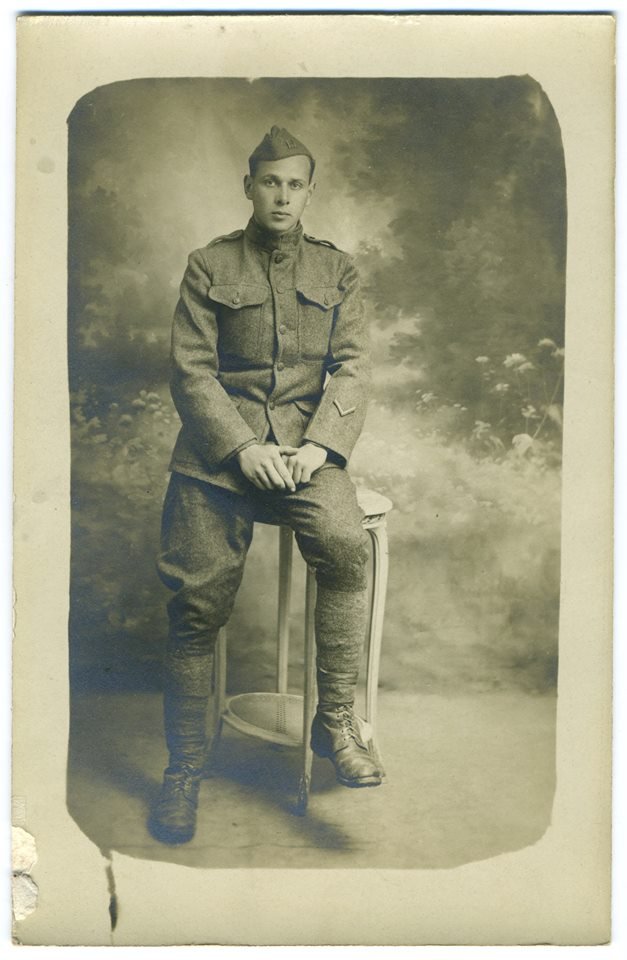 U.S. Army Corps of Engineers Headquarters/Courtesy
U.S. Army Corps of Engineers Headquarters/Courtesy
A portrait of Bamberger in uniform in 1918.
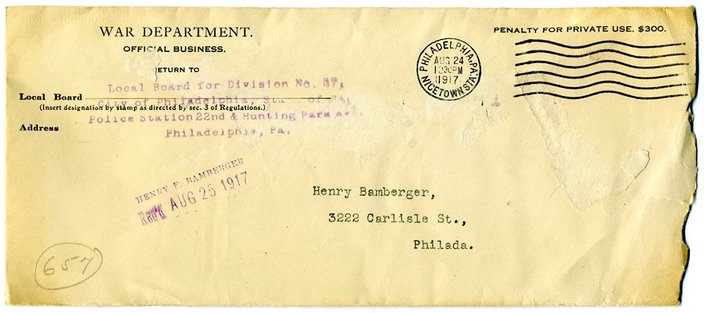 U.S. Army Corps of Engineers Headquarters/Courtesy
U.S. Army Corps of Engineers Headquarters/Courtesy
 U.S. Army Corps of Engineers Headquarters/Courtesy
U.S. Army Corps of Engineers Headquarters/Courtesy
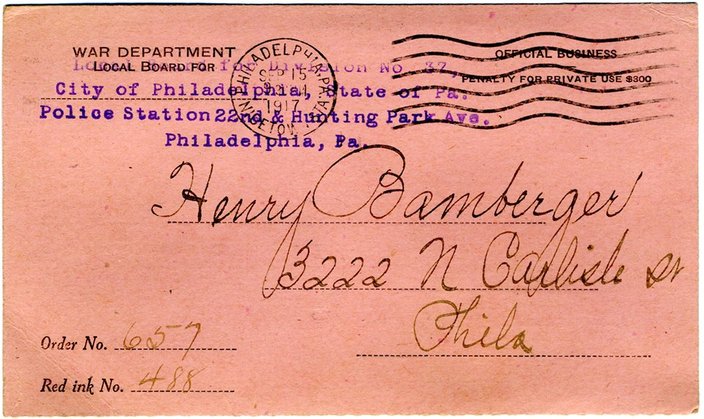 U.S. Army Corps of Engineers Headquarters/Courtesy
U.S. Army Corps of Engineers Headquarters/Courtesy
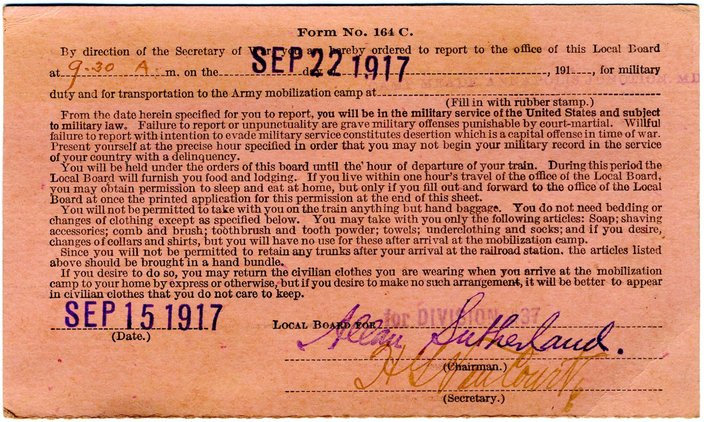 U.S. Army Corps of Engineers Headquarters/Courtesy
U.S. Army Corps of Engineers Headquarters/Courtesy
An envelope mailed to Bamberger's Tioga address that contained his draft notice letter and draft notice card.
 U.S. Army Corps of Engineers Headquarters/Courtesy
U.S. Army Corps of Engineers Headquarters/Courtesy
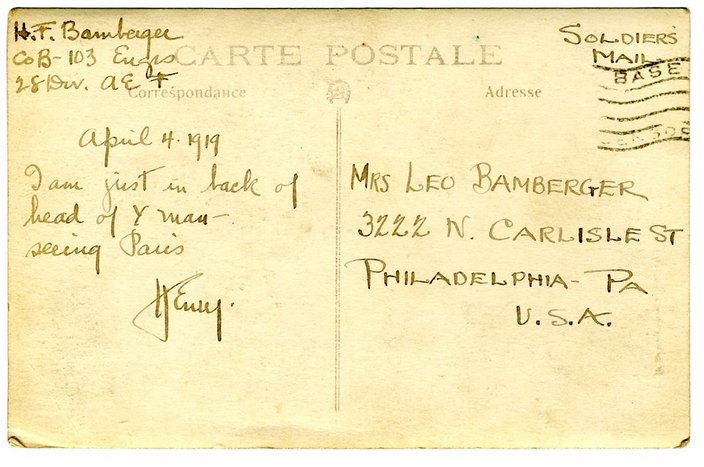 U.S. Army Corps of Engineers Headquarters/Courtesy
U.S. Army Corps of Engineers Headquarters/Courtesy
A postcard Bamberger mailed to his family in April 1919. He wrote, "I am just in back of head of Y man – seeing Paris."
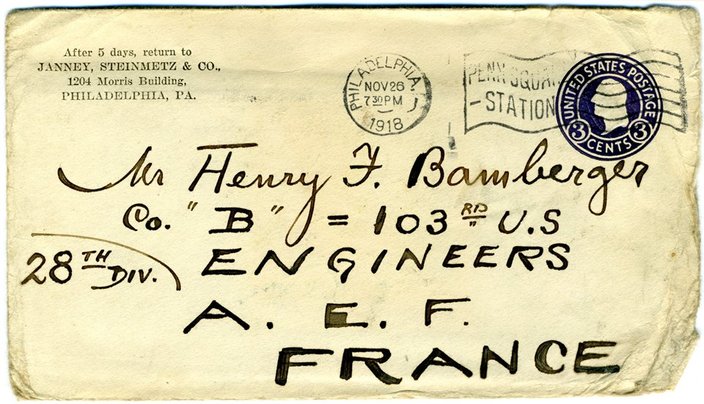 U.S. Army Corps of Engineers Headquarters/Courtesy
U.S. Army Corps of Engineers Headquarters/Courtesy
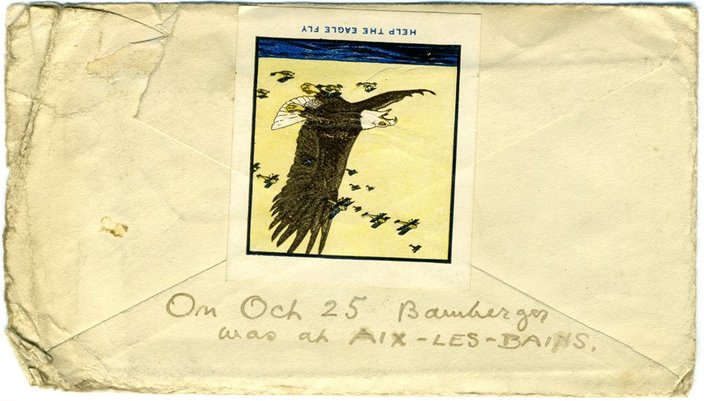 U.S. Army Corps of Engineers Headquarters/Courtesy
U.S. Army Corps of Engineers Headquarters/Courtesy
The front and back of an envelope mailed to Bamberger in France in November 1918.
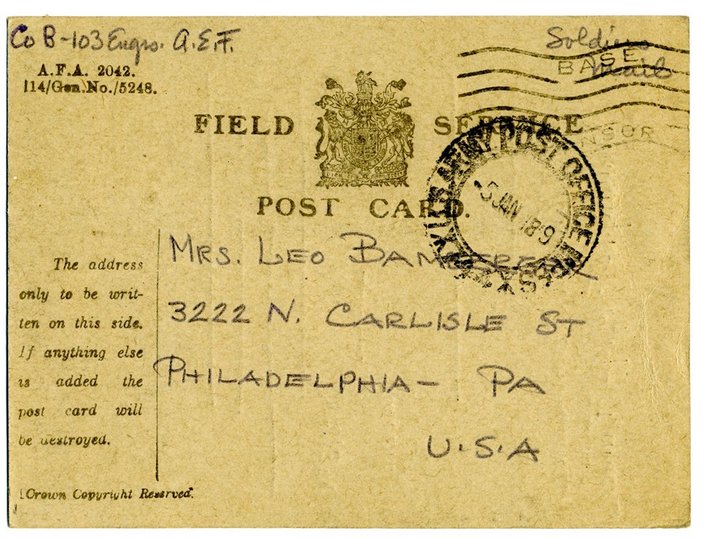 U.S. Army Corps of Engineers Headquarters/Courtesy
U.S. Army Corps of Engineers Headquarters/Courtesy
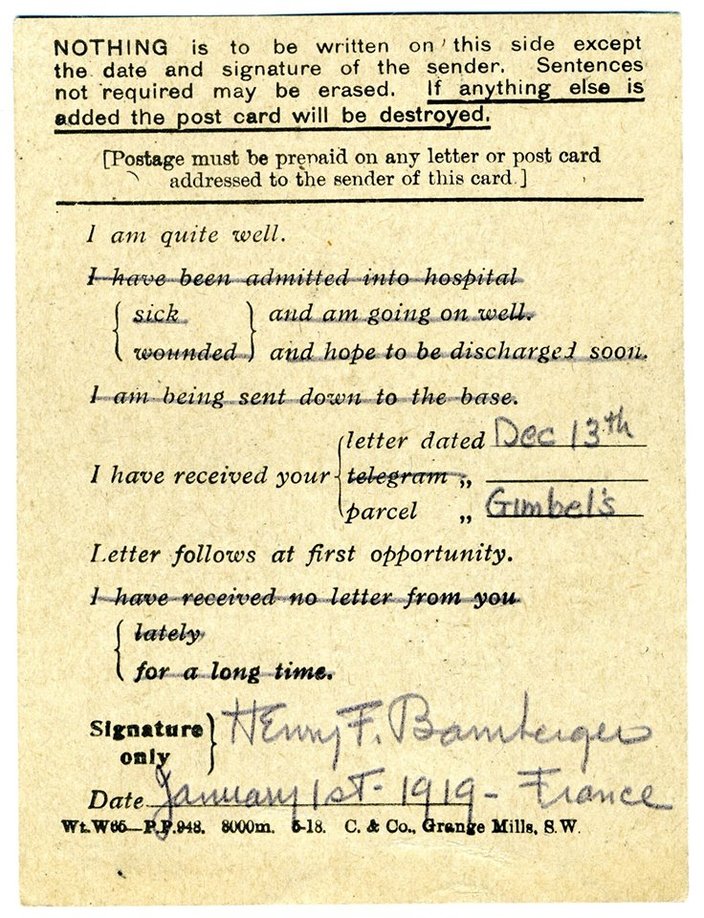 U.S. Army Corps of Engineers Headquarters/Courtesy
U.S. Army Corps of Engineers Headquarters/Courtesy
The front and back of a pre-printed postcard Bamberger mailed to his Tioga house in January 1919. Soldiers would often send these postcards to their families to let them know that they were OK and whether or not they received their care packages, according to the U.S. Army Corps of Engineers.
The postcard Bamberger sent acknowledges that he got his family's package from Gimbels, one of the three biggest department stores that sat at Eighth and Market streets in the 20th century.
 U.S. Army Corps of Engineers Headquarters/Courtesy
U.S. Army Corps of Engineers Headquarters/Courtesy
A portrait of Bamberger in uniform in 1918. He was honorably discharged at Camp Dix, New Jersey in May 1919.
To learn more about the U.S. Army Corps of Engineers' involvement in WWI, visit its website here.